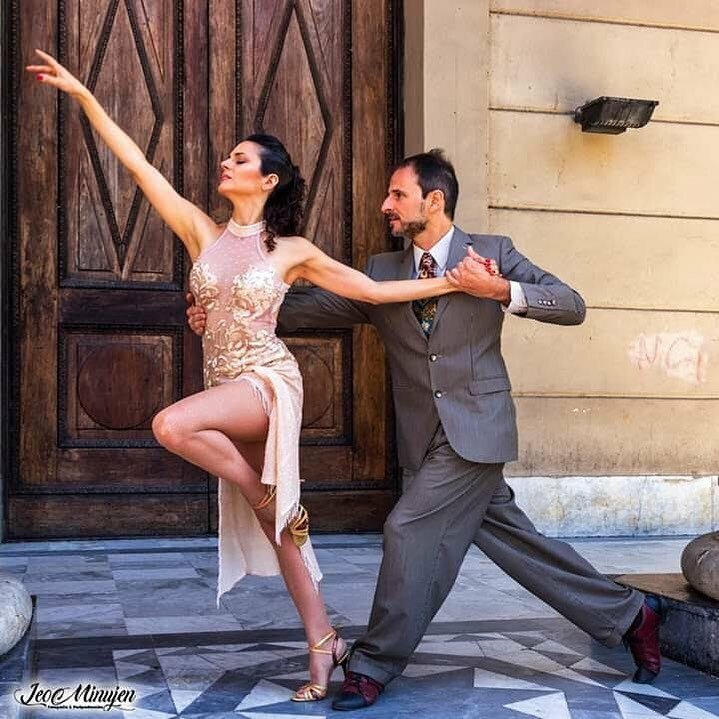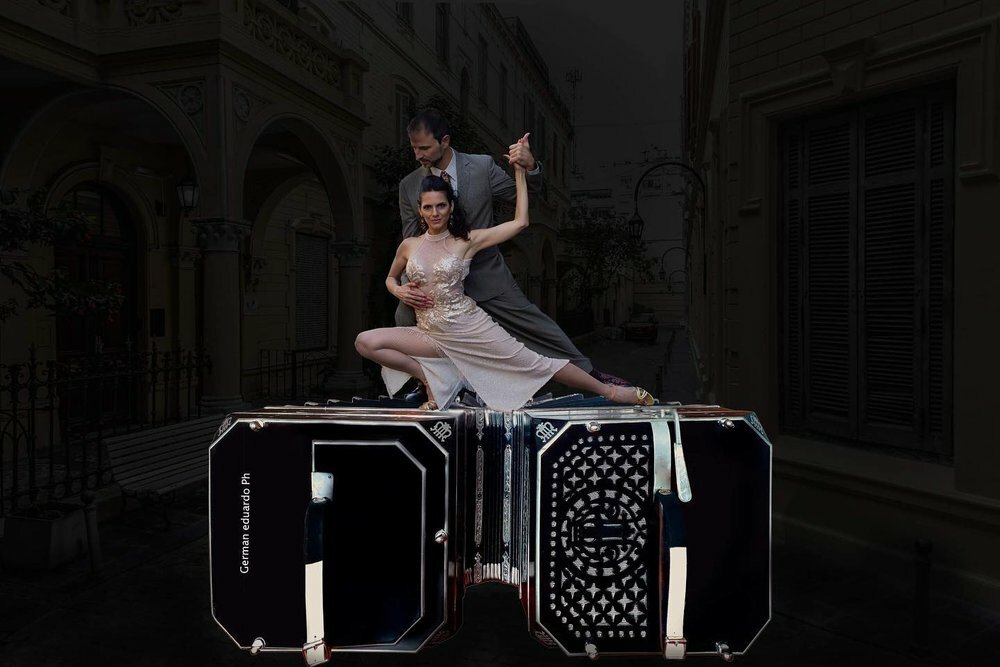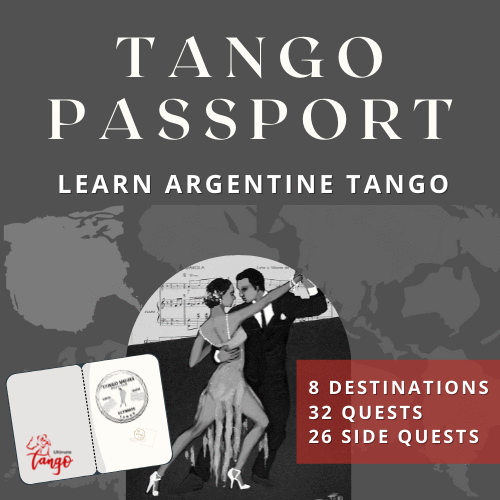We’ve all heard about El Cachafaz. According to Dance Us,
he was one of the first tango dancers. He left Buenos Aires and danced everywhere his feet took him.
We’ve also heard about Casimiro Ain or El Vasco, another legendary tango dancer. He once performed for Pope Benedict XV, and that alone already makes him historic. There’s also Carlos Gardel, the King of Tango, who is probably the most notable figure in tango’s early days. We’ll never run out of iconic tango dancers to talk about.
But who is Damian Esell? If you haven’t heard of his name before, now is the best time to become acquainted.
Damian Esell is a visual artist, tango dancer, and teacher who has quite a few theories. He has tango sequences, tango lessons, tango tutorials, and more on his YouTube channel.
Let’s get to know Damian Esell as a living visual artist and tango legend!
Who Is Damian Esell?
Damian Esell has participated in almost 100 international festivals worldwide, including the following:
Sitges
Tangomagia
Tangocamp
C.I.T.A.
Doble Ocho
Easter Tango Basel
Tango Tage Leipzig
International Tango Congress of New Zealand
Malmö Tango Festival
Bucharest Tango Festival
He has also participated on the jury in the World Tango Championship in Buenos Aires!
Apart from being a tango dancer, Damian specializes in drawing, painting, digital art, video production, and editing.
Tango With Damian Esell
Damian Esell didn’t start as a tango dancer right away. He was a sketch artist and a painter, and his love for art led him to focus on the art of tango.
His tango journey started in 1997.
From 1999 to 2009, he traveled for seminars and various tango festivals.
Damian is known for his style, which combines the Tango Salón and Milonguero styles. Add the elements of the Scenic Tango and Tango Nuevo, and that’s him!
He and his dance partner developed their own style, pedagogy, and methodology.
Damian as a Visual Artist
Damian Esell’s power in visual artistry is as incredible as his artistry as a tango dancer and teacher.
Damian’s artworks are a great source of inspiration for many people! You can easily find his artwork on Artmajeur, Facebook, and Instagram to get an idea of how he is as an “artista plástico.”
Want to see his art in Greater Boston? Make friends with Russell and Maritza or Andy - they have pieces of his art!

A post from Damian Ignacio Eselevsky Esell’S Facebook Account
It’s easy to see how art just naturally flows through Damian.
He has a way with colors, and his paintings are very detailed and playful. His art is an excellent addition to any space!
Damian’s artistic talent is reflected in both his visual art and tango teaching. Damian is a living legend, and we’re so advantaged to have the opportunity to learn from him.
Secrets of a Master
Damian Esell shares his own knowledge of tango dancing through his original blog. He talks about secrets that we can only discover through experience. Moreover, he answers questions about the musicality applied to the tango dance.
In “Tango Secrets, the Methodology and Philosophy of Argentine Tango,”
Damian said that to him, tango is about “the very deep connection between two persons and a musical theme.”
Damian was a part of the Tango Secrets, the unique online series of interviews and discussions with some of the world’s most interesting tango dancers, thinkers, authors, researchers, and choreographers.
He described tango as something that transforms you and your partner into unity.
Before establishing this understanding of tango, Damian went through years of exploring and practicing. How did he become a master of his craft?
Captured by Tango
Damian shared that he only accompanied his, then, partner, who pushed him to take a lesson. He said he didn’t like to dance and didn’t dance anything. That lesson turned out to be the beginning of his long tango journey!
I remember myself practicing movements of dancing between… in the rest time between one lesson and the other in the fine art school. And the teachers come say, “Oh, you are a tango dancer.” “No, I’m just learning. It’s my second lesson,” I said. “But you look well.”
Damian had always been an artist, painting since he was six years old. He learned to play the piano at 12 and discovered his potential in tango when he was a fine art school professor.
Damian had many teachers and learned from many people.
One particular influence he mentioned is Eduardo Sotelo, a tango teacher teaching in a pizzeria.
However, Eduardo Sotelo was just a push. He was an instrument for Damian to learn that there were tango styles he liked and didn’t like.
If there was one tango dancer he really wanted to be like, it was Gabriel Angio.
I think he was one of the dancers, let’s say, or teachers that I watched more because I like his style, the elements that he was using by dancing, I think they were my sample… I want to dance like them, but I don’t have the spirit or the character like them. So I have to find my own way.
When Damian finally embraced his love for tango, he embarked on a new journey of self-discovery. Damian found his own style by mixing different aspects of his favorite styles. It was reflected through his teaching.
Teaching Tango
Two or three years after the teachers in the fine art school expressed how Damian looked like a tango dancer, he started to teach.
Just like how he got captured by tango, his teaching journey also accidentally began in a lesson. He was supposed to take a class, but the teacher didn’t show up. The owner of the place asked him to take over, stating that he seemed a bit advanced compared to the other students.
Damian showed them how he danced the tango but didn’t require them to do the same. Damian gave them the freedom to move as he did or however they wanted.
From then on, he nurtured his love for tango and teaching tango.
What sets Damian apart from other teachers is how he lets his students learn the tango in every way possible. Usually, learning something new means that you should stick to the rules. You must listen to one teacher and grow from there.
Damian, however, thinks it’s important for students to listen to different teachers and take what they think is best for them.
So what I recommend to my students from the first time is [to] go anywhere, take information from any teacher. Don’t stay only with me. I recommend this person, that person, the other one. So I give names.
I say, if I teach weekly, just on, let’s say, on Mondays, don’t wait until next Monday. Just tomorrow, walk, go with someone, after tomorrow, we go with someone else, make use of your time.
Damian was never jealous of his students deciding to take other people’s classes.
He always believed that it’s best for them to take in as much information from different sources as possible. After all, tango is an evolving dance.
On Learning Tango
In “Memory and automation and vices,”
Damian analyzes the process of learning and memorization. His blog is pedagogical, allowing readers to simplify their learning through metaphors and imagination. After all, learning to dance the tango is also an art.
Have you ever wondered how you actually learn and store the steps in your long-term memory? If dancing is an art, then how does one turn the mechanical act of memorizing into an aesthetic experience? Damian explains:
In short,
constant practice, through the repetition of joint exercises and sequences, and not resting on the laurels of automation are the key to a dance that is reliable, efficient, elegant, permanently updated and full of emotion and feeling. (Translated into English)
One best learns the tango by constantly practicing. If they are genuinely interested in tango, they pay attention to it and spend time observing or listening to memorize certain information. Learning about an image, a melody, or tone of voice is easier — those can be described in a thousand words! Dancers can use these advantages in how they learn to dance the tango.
There’s no one way to master tango, but with practice, dancers can understand the genre and discover their own styles.

The TanGhost Leader
As you get to know Damian Esell even more, you will eventually come across the term “TanGhost.”
This comes from his term “Ghost Leader,” which he talked about in this blog, “The Ghost Leader and the role changes in the Tango dance.” What is it about, and how will it change the way you dance the tango?
In tango, there are traditional roles that the man and woman play. The man leads the dance and marks the movements, and the woman follows the man and gets carried away by the tango embrace. Generations and generations of dancing the tango carried this on, and Damian challenges this tradition. He says that the quality of the dance can be superior if we give each one more functions. The couple can even exchange roles! In Tango Secrets, he said:
…the traditional roles that all our teachers taught us was the man is the leader, the girl is the follower. Okay. Yeah, this is part of the truth, but it’s not the complete truth.
The complete truth is that the man is the leader, but also follows. The girl is a follower, but with her body, also leads at the leader.
Damian believes tango doesn’t wholly rely on the man as the leader and the woman as the follower.
Damian’s “Ghost Leader” concept would make the tango more exciting and improve the dance’s quality. A couple can exercise their creativity by exchanging roles and trying different movements.
The woman can learn from the basic walks and the eights forward and backward, and the man will understand how to be led and how to play the follower role.
Understanding and learning the roles in tango expands your possibilities in the dance. You will be able to express yourself more and find your own style.
Generally, it enriches your dance! It takes patience, exercise, and time to be able to do this, and Damian jumpstarts the process. He defines the “Ghost Leader” as a hidden leader within the follower role. A follower doesn’t have to modify their function and submission to enrich the dance.
Damian teaches these exercises in his group classes, seminars, and private lessons. With the help of his partner Noelia Soldera, he shares the Tanghostleader culture with learners and teachers, giving a new and fresh perspective on the tango.
Dancing With the TanGhost
For some, following the tradition of tango is easier. Let the man lead, and let the woman follow. Damian Esell’s Tanghost concept might be too much for some, and they may feel lost while trying to practice it. It’s a given, especially when you start learning something new. However, if you’re committed to deepening your connection with the art of tango, Damian’s “Ghost Leader” concept will surely take you there.
The “Ghost Leader” exercise makes tango even more complex for others, but if you start off on the right foot, it opens your communication channels. It teaches you how to read other people’s body language.
Isn’t that what makes tango so special in the first place?
Damian’s “Ghost Leader” concept is about pushing your boundaries and expanding your horizons as a tango dancer.
Ultimately, tango is an infinite dance for him.
…you never [stop learning or improving or incorporating] new things. And it’s not a kind of automatic dance. It’s not superficial. It has a really big relation with your thoughts and with your emotions. And if you dance again and again, you’ll never dance in the same way.
The way Damian sees tango is a great way to learn about the art. You’re never done learning and expanding your horizons.
Damian encourages us to challenge even the traditions, like roles in tango, to create a richer experience for both the dancers and the audience.
There are many ways to approach tango. It can be accidental, like Damian’s, or a conscious decision. One inevitable thing is that tango will always be an evolving art form. To learn that, you can look at Damian Esell’s journey as a tango dancer, teacher, and choreographer!
Watch Tango Secrets interview with Damian HERE.
It doesn’t matter if you are entirely new to dancing… or have been dancing your whole life. We distill everything you need to know to be able to hit the milonga into simple, easy-to-understand steps. Regardless of your level, this course has something for everyone!
At the end of Tango Passport, you’ll be able to improvise and dance the tango…. anywhere in the world. More details HERE.



